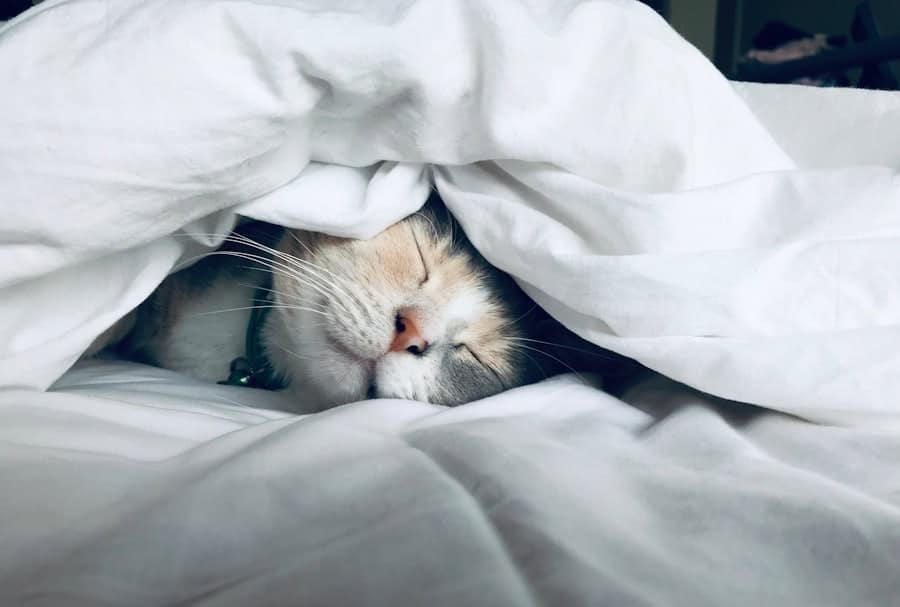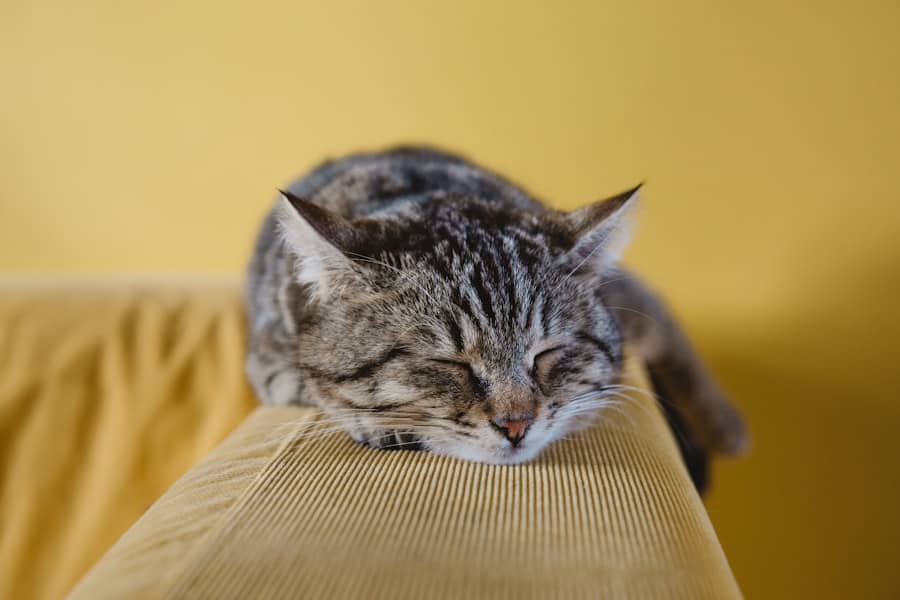The landscape of pet ownership is undergoing a significant transformation, driven by advancements in technology that cater to the needs of both pets and their owners. Automated pet care systems are emerging as a solution to the challenges of modern pet ownership, providing convenience, efficiency, and enhanced well-being for pets. As busy lifestyles become the norm, pet owners are increasingly seeking ways to ensure their furry companions receive the attention and care they deserve, even when they are not physically present.
This shift has led to the development of a variety of automated solutions designed to streamline daily pet care tasks, from feeding and grooming to exercise and health monitoring. The rise of automated pet care technology is not merely a trend; it reflects a broader societal change in how we perceive and interact with our pets. As pets are increasingly viewed as family members, the demand for innovative solutions that enhance their quality of life has surged.
This article delves into the various facets of automated pet care, exploring robotic feeding systems, litter box solutions, exercise aids, and more. By examining these technologies, we can better understand how they contribute to the well-being of pets and the peace of mind of their owners.
Key Takeaways
- Automated pet care technology is revolutionizing the way pet owners care for their animals, offering convenience and peace of mind.
- Robotic feeding and watering systems provide precise portion control and ensure pets have access to fresh water at all times.
- Automated litter box solutions offer a hands-free way to keep the litter box clean, reducing odors and minimizing the chore of scooping.
- Robot-assisted pet exercise and entertainment devices help keep pets active and engaged, even when owners are busy or away from home.
- Remote monitoring and communication tools allow pet owners to check in on their pets and even interact with them while away, providing reassurance and connection.
Robotic Feeding and Watering Systems for Pets
Robotic feeding systems have revolutionized the way pet owners manage their pets’ dietary needs. These devices are designed to dispense food at scheduled intervals, ensuring that pets receive their meals on time, even when their owners are away. Many modern feeders come equipped with programmable settings that allow owners to customize portion sizes and feeding times according to their pets’ specific dietary requirements.
For instance, a pet owner can set a feeder to dispense a certain amount of kibble in the morning and evening, accommodating a pet’s unique feeding schedule. In addition to scheduled feeding, some robotic feeders are equipped with smart technology that allows for remote control via smartphone apps. This feature enables pet owners to monitor their pets’ eating habits in real-time and make adjustments as needed.
For example, if a pet owner notices that their cat is not eating as much as usual, they can remotely dispense an extra portion to encourage eating. Furthermore, these devices often include features such as voice recording capabilities, allowing owners to leave comforting messages for their pets during mealtime. This combination of convenience and interactivity enhances the bond between pets and their owners while ensuring that pets receive proper nutrition.
Watering systems have also seen significant advancements in automation. Automatic water dispensers provide a continuous supply of fresh water for pets, reducing the need for constant refilling. Many models incorporate filtration systems that keep the water clean and free from contaminants, promoting better hydration for pets.
Some advanced watering systems even feature sensors that detect when the water level is low, alerting owners via smartphone notifications. This ensures that pets always have access to clean water, which is crucial for their health and well-being.
Automated Litter Box Solutions

The introduction of automated litter boxes has been a game-changer for cat owners seeking to simplify the often unpleasant task of litter maintenance. These innovative devices utilize sensors and mechanical components to automatically clean litter after each use, significantly reducing the frequency with which owners must scoop waste. For instance, many automated litter boxes employ a raking mechanism that sifts through the litter, separating clumps of waste and depositing them into a sealed compartment.
This not only keeps the litter box cleaner but also minimizes odors, creating a more pleasant environment for both cats and their owners. Some models take automation a step further by incorporating self-cleaning features that activate after a cat exits the box. These advanced systems often include health monitoring capabilities, tracking a cat’s usage patterns and alerting owners to potential health issues.
For example, if a cat begins using the litter box more frequently or shows changes in its elimination habits, the system can send notifications to the owner’s smartphone. This proactive approach allows for early detection of potential health problems, enabling timely veterinary intervention. Moreover, automated litter boxes are designed with user-friendly interfaces that make setup and maintenance straightforward.
Many models feature removable waste compartments for easy disposal and washable components that ensure hygiene. The convenience offered by these devices not only saves time but also enhances the overall quality of life for both cats and their owners. As technology continues to evolve, we can expect even more sophisticated features in automated litter boxes that further improve their functionality and ease of use.
Robot-Assisted Pet Exercise and Entertainment
Ensuring that pets receive adequate exercise is essential for their physical health and mental well-being. Robot-assisted exercise solutions have emerged as an effective way to engage pets in physical activity while providing entertainment. Automated toys and devices designed for interactive play can keep pets active even when their owners are busy or away from home.
For example, robotic ball launchers can automatically throw balls for dogs to chase, allowing them to expend energy in a fun and engaging manner. These robotic toys often come equipped with adjustable settings that allow owners to customize the distance and frequency of ball launches based on their dog’s size and energy level. Some models even incorporate smart technology that enables remote control via smartphone apps, allowing owners to initiate play sessions from anywhere.
This feature is particularly beneficial for busy pet owners who want to ensure their dogs remain active throughout the day. In addition to ball launchers, there are also robotic companions designed specifically for cats. These devices often mimic prey-like movements, enticing cats to engage in play by pouncing or chasing after them.
Such interactive toys stimulate a cat’s natural hunting instincts while providing essential exercise. Some advanced models even feature built-in cameras that allow owners to monitor their cats’ playtime remotely, providing peace of mind while ensuring their pets remain active.
Remote Monitoring and Communication for Pet Owners
The ability to remotely monitor pets has become increasingly important in today’s fast-paced world. Various technologies now allow pet owners to keep an eye on their furry friends while they are away from home.
For instance, if a dog is barking excessively or appears anxious while its owner is at work, the owner can use the camera’s audio feature to speak soothingly to the pet, helping to alleviate its stress. Some advanced monitoring systems also include motion detection features that send alerts to owners’ smartphones when movement is detected in designated areas of the home. This can be particularly useful for monitoring pets’ behavior when they are left alone or when new visitors enter the home.
Additionally, many pet cameras offer cloud storage options for recording video footage, allowing owners to review their pets’ activities during their absence. Moreover, remote monitoring technology extends beyond just visual observation; it can also track pets’ health metrics through wearable devices. Smart collars equipped with GPS tracking capabilities allow owners to monitor their pets’ location in real-time, ensuring they do not wander too far from home or get lost during outdoor adventures.
Some collars also track activity levels and provide insights into a pet’s overall health and fitness trends over time.
Robotic Grooming and Cleaning Devices

Grooming is an essential aspect of pet care that contributes significantly to a pet’s health and comfort. Robotic grooming devices have emerged as an innovative solution for maintaining a pet’s coat without requiring extensive manual effort from owners. Automated grooming brushes can effectively remove loose fur and debris while providing a gentle massage for pets.
These devices often feature adjustable settings that cater to different coat types and lengths, ensuring optimal grooming results. In addition to grooming brushes, robotic vacuum cleaners designed specifically for pet hair have gained popularity among pet owners. These devices utilize advanced suction technology and specialized brushes to effectively capture pet hair from various surfaces within the home.
Many robotic vacuums are equipped with smart navigation systems that allow them to map out rooms and avoid obstacles while cleaning efficiently. This automation not only saves time but also helps maintain a clean living environment for both pets and their owners. Furthermore, some robotic grooming devices incorporate self-cleaning features that simplify maintenance for pet owners.
For example, certain models automatically collect shed fur into designated compartments that can be easily emptied after each grooming session. This reduces the hassle associated with traditional grooming methods while ensuring that pets remain comfortable and well-groomed.
The Future of Automated Pet Care Technology
As technology continues to advance at an unprecedented pace, the future of automated pet care holds exciting possibilities. Innovations in artificial intelligence (AI) and machine learning are expected to play a significant role in enhancing existing automated solutions while paving the way for new developments. For instance, AI-driven feeding systems could analyze a pet’s eating habits over time and adjust portion sizes based on individual dietary needs or weight management goals.
Moreover, advancements in robotics may lead to more sophisticated interactive toys that adapt to a pet’s behavior during playtime. These toys could learn from a pet’s preferences and adjust their movements or challenges accordingly, providing an engaging experience tailored specifically for each animal. Such innovations would not only enhance entertainment value but also promote physical activity in pets.
The integration of health monitoring features into automated pet care solutions is another area poised for growth. Future technologies may enable comprehensive health assessments through wearable devices that track vital signs such as heart rate or temperature in real-time. This data could be analyzed using AI algorithms to detect early signs of illness or distress, allowing for timely veterinary intervention.
Considerations and Limitations of Robot Pet Care Solutions
While automated pet care technologies offer numerous benefits, there are important considerations and limitations that potential users should keep in mind. One significant concern is the reliance on technology for tasks traditionally performed by humans. While automation can enhance convenience, it should not replace the essential human-animal bond that comes from direct interaction and care.
Pets thrive on companionship and emotional connection; therefore, it is crucial for owners to balance automation with quality time spent with their animals. Another limitation lies in the potential technical issues associated with automated devices. Like any technology, robotic solutions may experience malfunctions or connectivity problems that could disrupt their functionality.
For instance, if an automated feeder fails due to a power outage or software glitch, it could lead to missed meals for pets who rely on these systems for regular feeding schedules. Additionally, some automated solutions may not be suitable for all types of pets or breeds. For example, certain robotic toys may be too complex or intimidating for timid animals, while others may not accommodate larger breeds effectively.
It is essential for pet owners to carefully assess whether specific automated products align with their pets’ individual needs before making a purchase. In conclusion, while automated pet care technologies present exciting opportunities for enhancing the lives of both pets and their owners, it is vital to approach these innovations thoughtfully and considerately. Balancing automation with personal interaction remains key in ensuring that our beloved companions receive the love and attention they deserve amidst our increasingly busy lives.
If you’re interested in the latest technology trends, you may also want to check out Recode, a technology news website owned by Vox Media. They cover a wide range of topics, including how robots are revolutionizing various industries, such as pet care. Their in-depth articles provide valuable insights into the ever-evolving world of technology.
FAQs
What are some examples of automated solutions for pet care using robots?
Some examples of automated solutions for pet care using robots include automatic pet feeders, robotic litter boxes, interactive toys, and pet monitoring cameras.
How do automatic pet feeders work?
Automatic pet feeders dispense a predetermined amount of food at scheduled times, ensuring that pets are fed even when their owners are not at home.
What are the benefits of using robotic litter boxes for pet care?
Robotic litter boxes automatically clean and scoop the litter, reducing the need for manual scooping and providing a cleaner and more hygienic environment for pets and their owners.
How do interactive toys revolutionize pet care?
Interactive toys engage pets in play and mental stimulation, providing entertainment and exercise even when pet owners are not available to play with their pets.
What is the role of pet monitoring cameras in automated pet care?
Pet monitoring cameras allow pet owners to remotely monitor their pets, check on their well-being, and interact with them through two-way audio and video communication.
Are there any safety considerations when using robots for pet care?
It is important to carefully follow the manufacturer’s instructions and guidelines when using robots for pet care to ensure the safety and well-being of the pets. Regular maintenance and monitoring of the robotic devices are also essential for safe operation.

